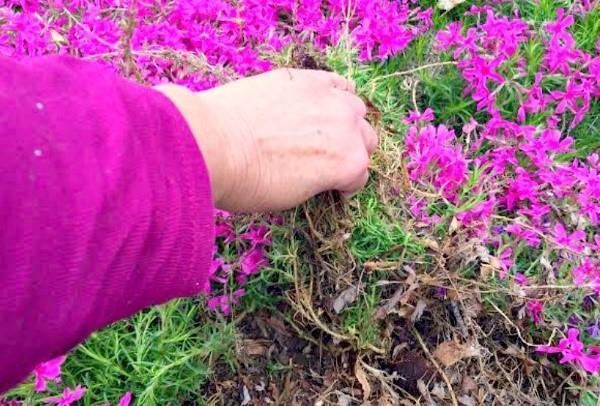Why and when phlox transplant is needed
 Most gardeners grow perennial phloxes, and they live at the planting site for a long time. However, phlox transplanting is an integral part of the growing process. Despite the fact that perennials are planted once, they need to periodically change their place of residence, especially chic phlox. What is the reason for this and when and how to transplant these plants?
Most gardeners grow perennial phloxes, and they live at the planting site for a long time. However, phlox transplanting is an integral part of the growing process. Despite the fact that perennials are planted once, they need to periodically change their place of residence, especially chic phlox. What is the reason for this and when and how to transplant these plants?
Transplant value for phlox
A feature of the structure of the root system of phlox is that every year they grow new roots on top of the old ones. This means that in a few years a well-developed rhizome begins to literally bulge out of the ground. Each year, the buds rise closer to the soil surface. This affects both the general health of phloxes and their flowering. In general, frost-hardy plants can freeze during a particularly cold and snowless winter. In addition, their shoots become thinner and often break under the weight of the buds. And the flowers themselves are noticeably smaller.
That's why phlox needs to be transplanted to avoid such problems and preserve large flowers.
When is it better to transplant phlox?
Autumn is the best time to transplant all garden plants. During this period of the year, the soil is no longer as dry as in summer. The autumn rains managed to saturate it with moisture, and the air itself became more favorable. The temperature dropped to comfortable values and the humidity became higher. All this is the best way to ensure that the transplanted crops are easier to adapt and take root faster. Phlox is no exception - it is also better to replant them in the fall, around October.
Phlox transplant, if necessary, can be combined with reproduction. If the bush is very dense, it needs to be cut into pieces with a shovel.
Phlox transplant step by step
The first step is to carefully dig up an adult bush. It should be borne in mind that the root system of phlox is quite powerful. It grows well both in depth and in width. Therefore, the shovel should not be placed close to the shoots, but well backed off, and dig deeper.
A landing pit should be prepared in a new place:
- its diameter must be greater than the circumference of the bush so that it can easily enter;
- you need to dig deep enough so that the young buds are below the soil level.
In order for the flowering to be abundant and large, it is worth putting on the bottom of the planting pit manure, compost or humus.
Set the phlox in the center into the finished recess and cover it with earth, leaving a shallow hole for watering. It remains only to water the transplanted phlox and lightly cover the moist soil with dry so that a crust does not form. And in conclusion, break off the shoots, shortening them in half, so that the bush does not waste energy on setting seeds.